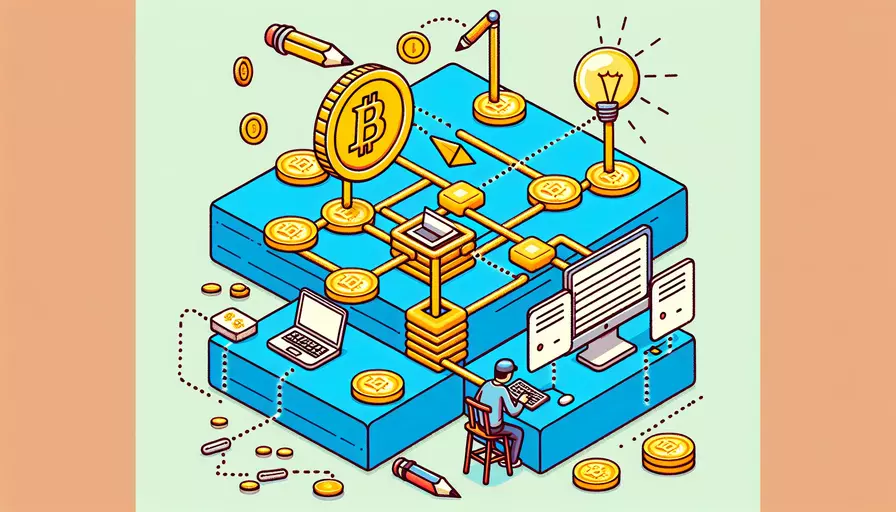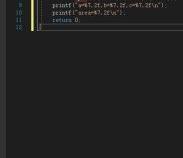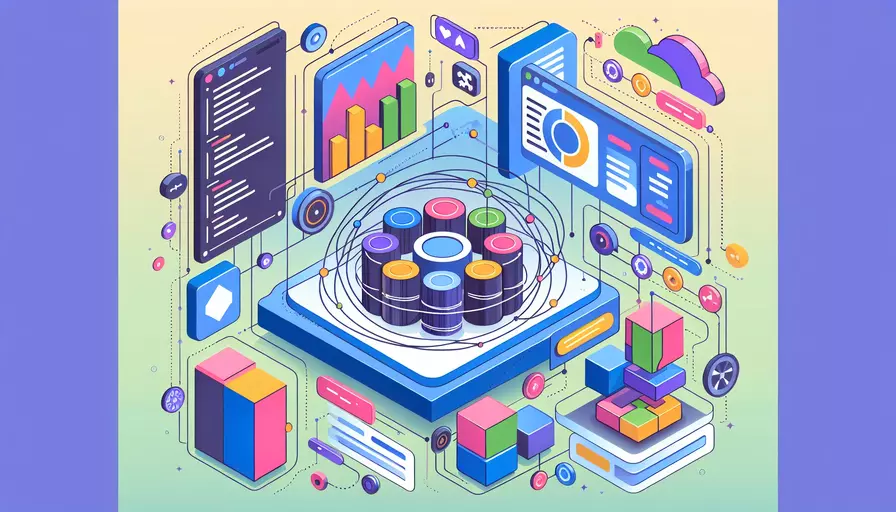go语言区块链开发入门教程
发布时间:2025-03-08 09:59:40 发布人:远客网络

Go语言是一种高效、简洁且强类型的编程语言,非常适合于编写区块链应用。在Go语言中编写区块链可以通过以下几步:1、定义区块结构;2、创建区块链;3、实现共识算法;4、处理交易;5、实现节点间的通信。下面我们将重点讨论如何定义区块结构。
定义区块结构是区块链开发的基础。每个区块包含若干基本信息,如前一个区块的哈希值、时间戳、交易数据等。下面我们详细讲解如何在Go语言中定义一个区块结构:
package main
import (
"crypto/sha256"
"encoding/hex"
"time"
)
// Block represents each 'item' in the blockchain
type Block struct {
Index int // Position of the data record in the blockchain
Timestamp string // Automatically determined and added when the block is created
Data string // Any data we want to store in the block
PrevHash string // The hash of the previous block in the chain
Hash string // The hash of the current block
}
// CalculateHash creates a SHA256 hash of a Block
func (b *Block) CalculateHash() string {
record := string(b.Index) + b.Timestamp + b.Data + b.PrevHash
h := sha256.New()
h.Write([]byte(record))
hashed := h.Sum(nil)
return hex.EncodeToString(hashed)
}
// NewBlock creates a new Block using previous block's hash
func NewBlock(prevBlock *Block, data string) *Block {
newBlock := &Block{
Index: prevBlock.Index + 1,
Timestamp: time.Now().String(),
Data: data,
PrevHash: prevBlock.Hash,
}
newBlock.Hash = newBlock.CalculateHash()
return newBlock
}
func main() {
genesisBlock := &Block{
Index: 0,
Timestamp: time.Now().String(),
Data: "Genesis Block",
PrevHash: "",
Hash: "",
}
genesisBlock.Hash = genesisBlock.CalculateHash()
secondBlock := NewBlock(genesisBlock, "Second Block")
// Print the blocks
println("Genesis Block:", genesisBlock.Hash)
println("Second Block:", secondBlock.Hash)
}
一、定义区块结构
- Block结构体:包含区块的基本信息,如索引、时间戳、数据、前一个区块的哈希值和当前区块的哈希值。
- CalculateHash方法:用于计算区块的哈希值,通过SHA256算法生成。
- NewBlock函数:用于创建新块,接受前一个区块和数据作为参数。
该代码段定义了一个区块结构体,并实现了计算哈希和创建新区块的功能。通过这种方式,可以保证区块链的完整性和安全性。
二、创建区块链
在创建区块链时,我们需要一个链表或数组来存储所有区块,并实现添加区块的功能。
type Blockchain struct {
blocks []*Block
}
// AddBlock adds a new Block to the Blockchain
func (bc *Blockchain) AddBlock(data string) {
prevBlock := bc.blocks[len(bc.blocks)-1]
newBlock := NewBlock(prevBlock, data)
bc.blocks = append(bc.blocks, newBlock)
}
func NewBlockchain() *Blockchain {
genesisBlock := &Block{
Index: 0,
Timestamp: time.Now().String(),
Data: "Genesis Block",
PrevHash: "",
Hash: "",
}
genesisBlock.Hash = genesisBlock.CalculateHash()
return &Blockchain{blocks: []*Block{genesisBlock}}
}
func main() {
bc := NewBlockchain()
bc.AddBlock("Second Block")
bc.AddBlock("Third Block")
for _, block := range bc.blocks {
println("Index:", block.Index)
println("Timestamp:", block.Timestamp)
println("Data:", block.Data)
println("PrevHash:", block.PrevHash)
println("Hash:", block.Hash)
println()
}
}
- Blockchain结构体:用于存储所有区块。
- AddBlock方法:用于向区块链中添加新的区块。
- NewBlockchain函数:初始化区块链并创建创世区块。
三、实现共识算法
共识算法是确保区块链中各个节点数据一致性的重要机制,常见的共识算法包括PoW(工作量证明)和PoS(权益证明)。以下是一个简单的PoW实现:
import (
"strconv"
"strings"
)
func (b *Block) MineBlock(difficulty int) {
target := strings.Repeat("0", difficulty)
for b.Hash[:difficulty] != target {
b.Nonce++
b.Hash = b.CalculateHash()
}
}
func NewBlock(prevBlock *Block, data string, difficulty int) *Block {
newBlock := &Block{
Index: prevBlock.Index + 1,
Timestamp: time.Now().String(),
Data: data,
PrevHash: prevBlock.Hash,
}
newBlock.MineBlock(difficulty)
return newBlock
}
func main() {
difficulty := 3
bc := NewBlockchain()
bc.AddBlock("Second Block", difficulty)
bc.AddBlock("Third Block", difficulty)
for _, block := range bc.blocks {
println("Index:", block.Index)
println("Timestamp:", block.Timestamp)
println("Data:", block.Data)
println("PrevHash:", block.PrevHash)
println("Hash:", block.Hash)
println("Nonce:", block.Nonce)
println()
}
}
- MineBlock方法:通过不断更改Nonce值来找到满足难度要求的哈希值。
- NewBlock函数:在创建区块时,进行挖矿操作。
四、处理交易
在区块链中,交易是最重要的组成部分。我们需要定义交易结构并实现交易的处理和验证。
type Transaction struct {
Sender string
Receiver string
Amount float64
Timestamp string
}
type Block struct {
Index int
Timestamp string
Transactions []Transaction
PrevHash string
Hash string
Nonce int
}
func (b *Block) CalculateHash() string {
record := strconv.Itoa(b.Index) + b.Timestamp + strconv.FormatFloat(b.Nonce, 'f', 6, 64) + b.PrevHash
for _, tx := range b.Transactions {
record += tx.Sender + tx.Receiver + strconv.FormatFloat(tx.Amount, 'f', 6, 64) + tx.Timestamp
}
h := sha256.New()
h.Write([]byte(record))
hashed := h.Sum(nil)
return hex.EncodeToString(hashed)
}
func NewBlock(prevBlock *Block, transactions []Transaction, difficulty int) *Block {
newBlock := &Block{
Index: prevBlock.Index + 1,
Timestamp: time.Now().String(),
Transactions: transactions,
PrevHash: prevBlock.Hash,
}
newBlock.MineBlock(difficulty)
return newBlock
}
func main() {
difficulty := 3
bc := NewBlockchain()
transactions := []Transaction{
{"Alice", "Bob", 10.0, time.Now().String()},
{"Bob", "Charlie", 5.0, time.Now().String()},
}
bc.AddBlock(transactions, difficulty)
for _, block := range bc.blocks {
println("Index:", block.Index)
println("Timestamp:", block.Timestamp)
println("PrevHash:", block.PrevHash)
println("Hash:", block.Hash)
println("Nonce:", block.Nonce)
for _, tx := range block.Transactions {
println("Transaction:", tx.Sender, "->", tx.Receiver, "Amount:", tx.Amount)
}
println()
}
}
- Transaction结构体:包含交易的基本信息,如发送者、接收者、金额和时间戳。
- Block结构体更新:新增交易列表字段。
- CalculateHash方法更新:包含交易信息的哈希计算。
五、实现节点间的通信
为了实现分布式的区块链网络,节点间的通信是必不可少的。可以使用Go语言的net/http包实现简单的节点间通信。
import (
"encoding/json"
"io/ioutil"
"log"
"net/http"
)
var blockchain *Blockchain
func handleGetBlockchain(w http.ResponseWriter, r *http.Request) {
bytes, err := json.MarshalIndent(blockchain.blocks, "", " ")
if err != nil {
http.Error(w, err.Error(), http.StatusInternalServerError)
return
}
w.Write(bytes)
}
func handleWriteBlock(w http.ResponseWriter, r *http.Request) {
var m map[string]interface{}
body, err := ioutil.ReadAll(r.Body)
if err != nil {
http.Error(w, err.Error(), http.StatusInternalServerError)
return
}
json.Unmarshal(body, &m)
data := m["data"].(string)
blockchain.AddBlock(data)
w.WriteHeader(http.StatusCreated)
}
func main() {
blockchain = NewBlockchain()
http.HandleFunc("/blocks", handleGetBlockchain)
http.HandleFunc("/mine", handleWriteBlock)
log.Fatal(http.ListenAndServe(":8080", nil))
}
- handleGetBlockchain函数:处理GET请求,返回区块链的JSON表示。
- handleWriteBlock函数:处理POST请求,添加新块。
- main函数:初始化区块链并启动HTTP服务器。
通过以上步骤,我们已经实现了一个基本的区块链系统,包括区块结构定义、区块链创建、共识算法实现、交易处理和节点间通信。
总结
在本文中,我们详细讲解了如何使用Go语言编写一个基础的区块链系统。首先定义了区块结构,然后创建了区块链,接着实现了共识算法,处理了交易,最后实现了节点间的通信。通过这些步骤,你可以更好地理解区块链的基本原理和实现方法。下一步,可以尝试进一步优化和扩展,比如增加智能合约功能,提高共识算法的效率等。
更多问答FAQs:
1. 什么是区块链?
区块链是一种分布式数据库技术,被广泛应用于加密货币和其他领域。它是由一个个区块组成的链式数据结构,每个区块都包含了一些交易信息以及与前一个区块的链接。区块链的特点是去中心化、不可篡改和透明。
2. 为什么使用Go语言来开发区块链?
使用Go语言开发区块链有几个好处。Go语言具有良好的并发性能,可以有效地处理多个并发请求。这在区块链中非常重要,因为在处理交易和验证区块时,需要高效地处理大量的并发操作。Go语言具有简洁的语法和丰富的标准库,可以帮助开发人员快速开发出高效可靠的区块链应用程序。
3. 如何使用Go语言来编写区块链?
编写一个基本的区块链应用程序可以分为以下几个步骤:
步骤1:定义区块结构
需要定义一个区块的结构,包含区块的索引、时间戳、交易数据、前一个区块的哈希值和当前区块的哈希值等信息。
步骤2:生成创世区块
创世区块是区块链的第一个区块,没有前一个区块的哈希值。可以通过特定的规则生成创世区块,并将其添加到区块链中。
步骤3:添加新区块
在创世区块之后,可以根据一定的规则添加新的区块。需要验证新区块中的交易数据的有效性。然后,计算新区块的哈希值,并将其链接到前一个区块。最后,将新区块添加到区块链中。
步骤4:验证区块链
在添加新区块之后,可以对整个区块链进行验证。验证的过程包括检查每个区块的哈希值是否正确,并确保每个区块的前一个区块哈希值与前一个区块的实际哈希值相匹配。
以上是使用Go语言编写区块链的基本步骤。当然,区块链的实现还涉及到一些其他的细节,比如交易验证、共识算法等。但是通过以上的步骤,可以帮助你开始编写自己的区块链应用程序。




